- APPS
- Website Loyalty Program 17.0

| Technical name | website_loyalty_management |
| License | LGPL-3 |
| Website | https://store.webkul.com/Odoo-Website-Loyalty-Management.html |
| Included Dependencies | Webkul Message Wizard Website Extra Order Line Webkul Message Wizard |
| Extensions | Website Loyalty Management Extension |
Odoo Website Loyalty Management
For Helping You Win Your Customer Loyalty
Now, you can launch loyalty programs for your customers and give a reason to them to visit your Odoo Website Again. Moreover, it increases their chance to refer your online store to their friends and family too.
Information
Configure the rules for customers to earn the loyalty points
The module offers an ease to configure the rules for customers to earn loyalty points in Odoo Website to get the maximum benefits.
Choose the minimum cart value for the customers for them to be eligible for the loyalty points. Award loyalty points on order confirmation or order completion in the Odoo website.
Set the worth of each Loyalty point and maximum cart value that can be redeemed by the customers using the loyalty points. A loyalty point can be redeemed on the website during purchase for the set value in the Odoo backend.

Set Redemption type For Loyalty Points in your Odoo Website
With one time redemption, the customer can only redeem the accumulated only once after which the rest of the points would lapse. While the partial redemption allows the left points to be used again over next purchases until none is left.
Apart from this, you can reward Loyalty Points To The Customers For Signing Up For The Loyalty Program. You can choose to give away loyalty points to the customers when they choose to sign up for the Loyalty Program on your Odoo website.
Detailed Features List
Below is the list of feature for Website Loyalty ProgramIntroduced Loyalty Program in Odoo Website
- The module lets you introduce a Loyalty Program for your Odoo website customers.
- The registered customers earn loyalty points for making purchases on your Odoo Website which can then be redeemed on subsequent purchases.
Set the criteria for Loyalty Points
- Loyalty points for registering on the admin’s Odoo website can also be awarded to the customer by configuring it in the Odoo backend.
- The Odoo website admin can set rules for the customers to earn loyalty points based on purchase amount.
Set the Threshold to earn loyalty
- The threshold purchase amount can also be defined for the customers to be eligible to earn loyalty points
- Customers need to sign up for the Loyalty program on the Odoo Website to earn loyalty reward points. After signing up, The purchases give loyalty points to the customers on the Odoo Website.
Set the Loyalty Redemption Criteria
- The points can be redeemed on a one-time basis or partially on multiple orders as configured by the Odoo admin in the backend.
- Set the amount that can be redeemed with each loyalty point.
- The admin can also set the maximum purchase amount that can be redeemed by the customer using loyalty points in a single order on Odoo Website.
Check the history of loyalty reward points
- The history of loyalty reward points redemption by every customer can be seen in the Odoo backend.
- Moreover, the customer can also see the loyalty points in his account and their redemption value on the checkout page.
Show the Loyalty Program Information in frontend
- The information about the current loyalty program running on the Odoo website and its benefits are displayed on the customers’ checkout page.
- Setup & Configure
- Work-flow
- Loyalty Records
Loyalty Program
After the successful installation of the ODOO Website Loyalty Management, you will Create Loyalty Program under Website ==> Loyalty Management.
At the creation Of Loyalty Program Set
Minimum Purchase Limit.
Awarded Points on sign Up (Sign Up Points).
Awarded Points on Sale Order Amount.
Redemption Policy like One Time Redemption and Partial Redemption.

Redemption Policy
Create/Select the appropriate Redemption Policy as per your Requirement.
At the creation Of Redemption Policy Set
Point Start Limit.
Point End Limit.
Reward Amount on Each Point.
Select the default loyalty program to be used on website.
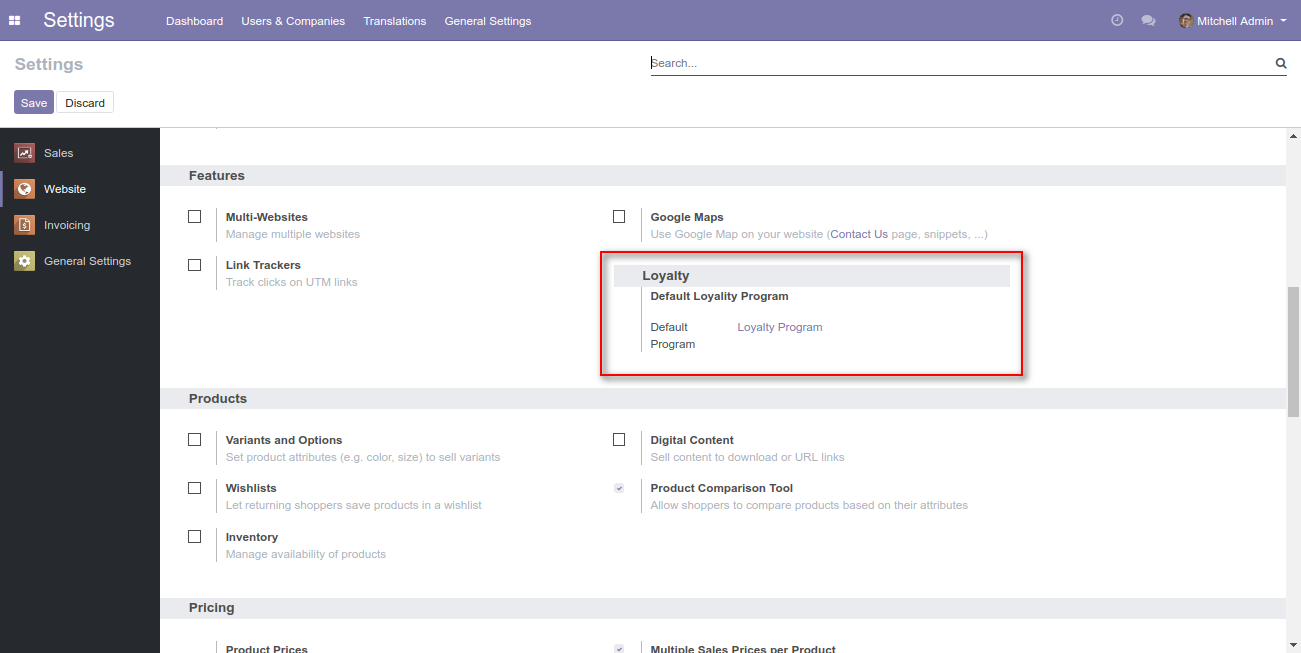
SignUp/Login First
This module will Help your E-Commerce to Generate More Sale By Expanding Number Of Users

NOTE:
A important feature is that on login/sign-up the user will not be redirect to his account instead he will automatically redirected to page where he was trying to get loyalty points.
Redemption
After Successfully Login/Sign Up On Clicking the Redeem Reward Buttonuser will get essential information about his current redemption.
This allow user as well as website Admin to get the maximum benefit.
For Example the Admin have the freedom to assign One Time Redemption As well As Partials Redemption.
In Case Of One Time Redemption If user is satisfy with this redemption benefit then he can proceed toward redeem the Reward on Clicking the Redeem Now, If Not the he can redeem later as after adding more product in their cart.
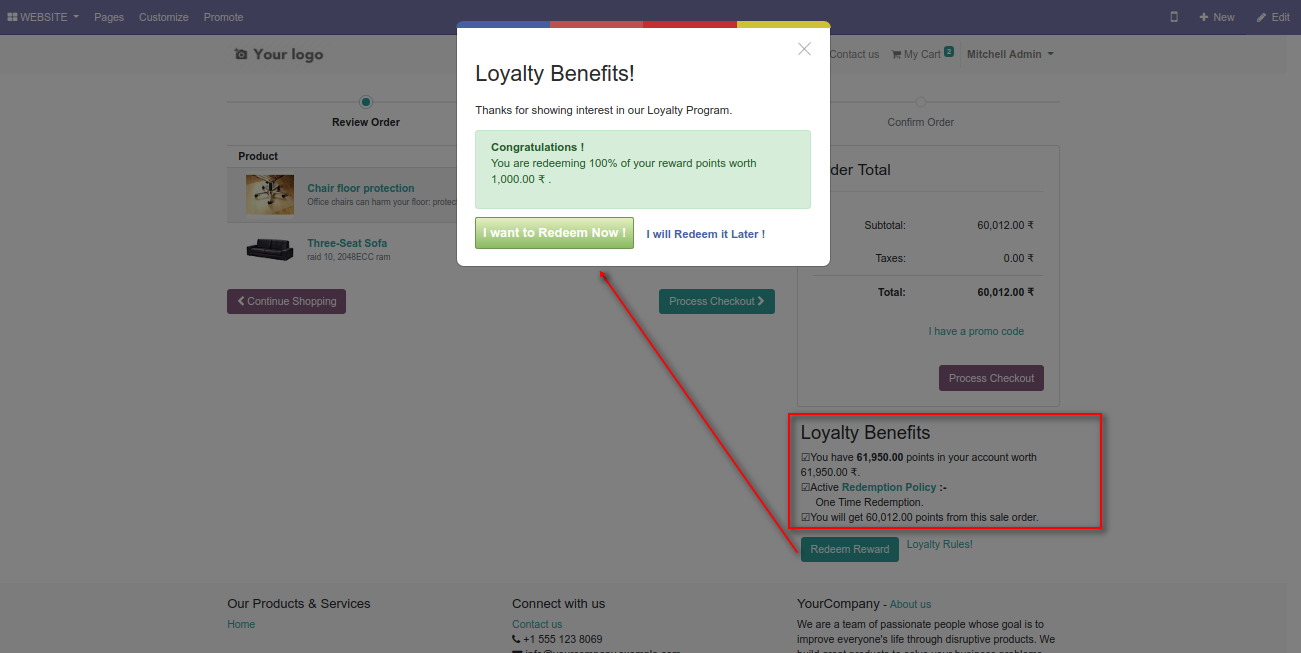
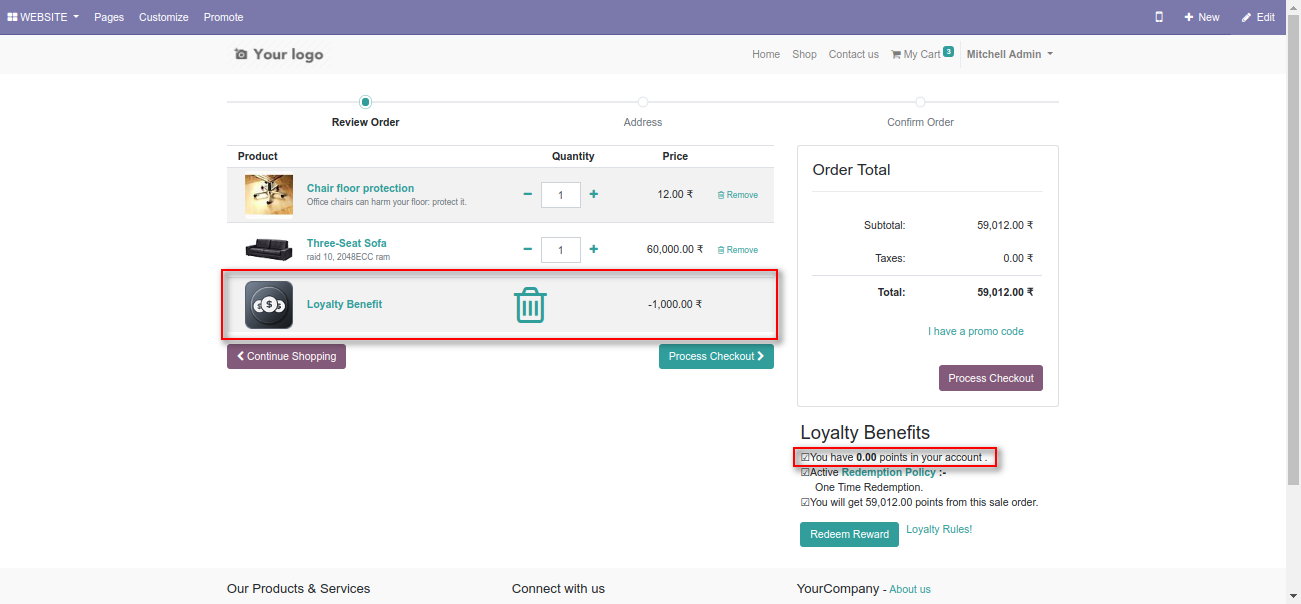
Loyalty Program Information
Loyalty Program Policy
The user can view the essentials information about currentlyactive loyalty Program on Clicking the Loyalty Rules Link.
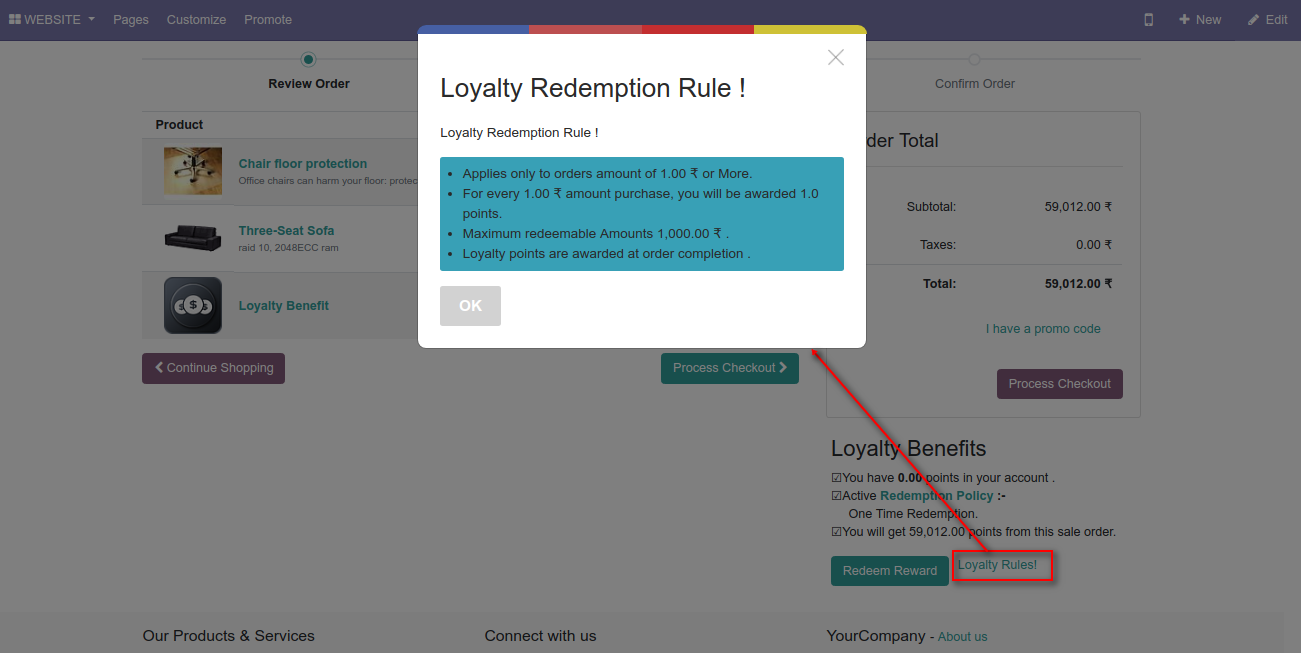
Specific Loyalty History
The information and suggestion about the Redemption is also available in this module, just click the Redeem policy to view it.
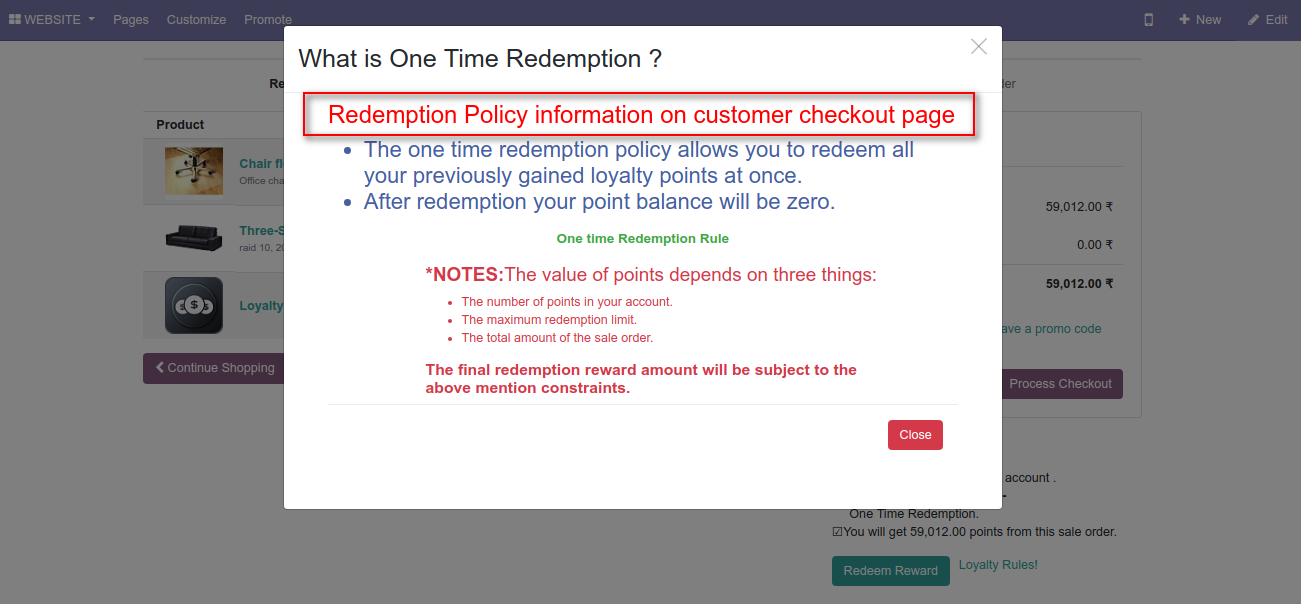
All Loyalty History
This module also helps in tracking the Loyalty and Redemption.
On back end the record/history of each loyalty points awarded and points redeemed is maintained thus in future the admin can estimate loyalty program and take measure to improve sale.
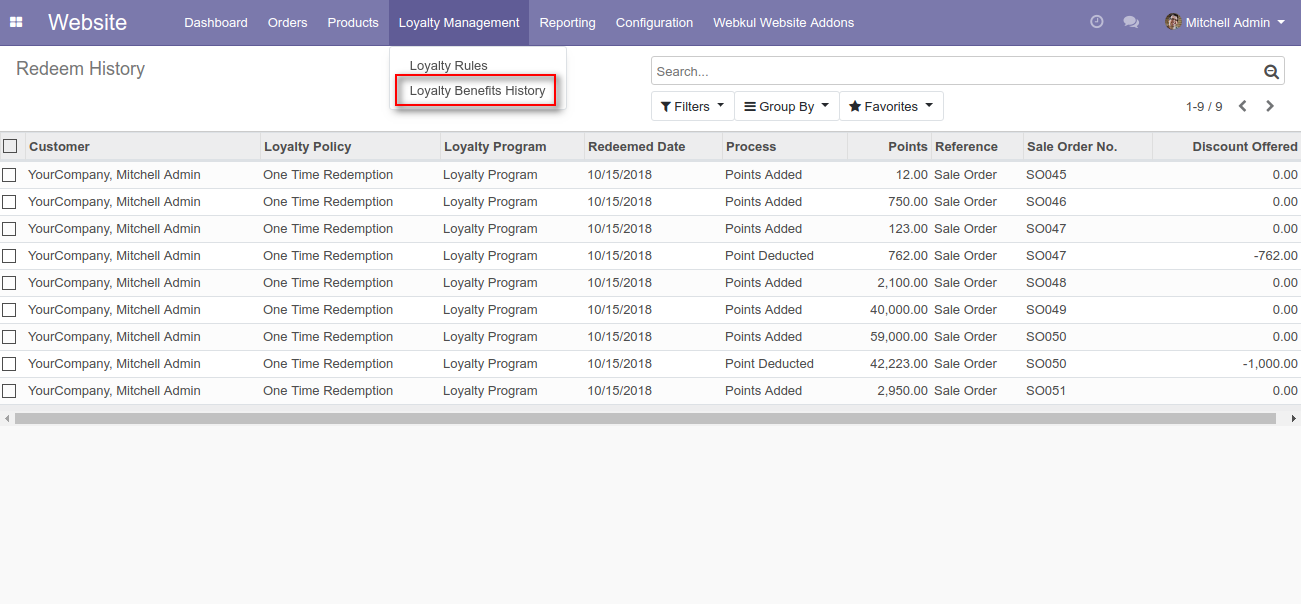
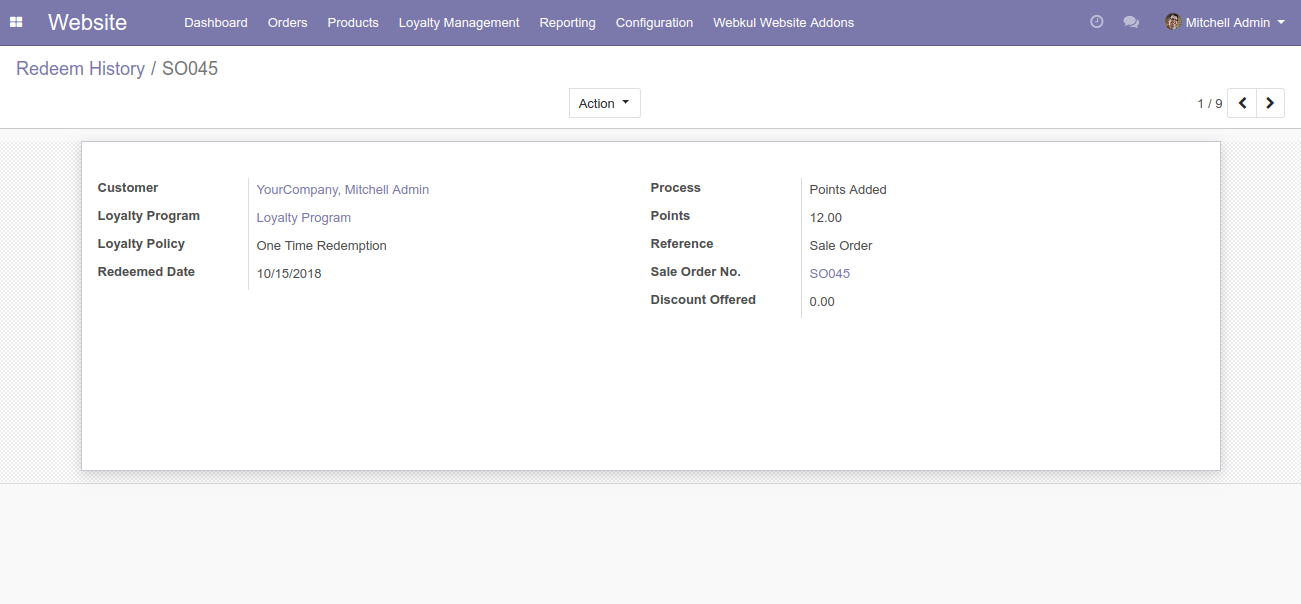
Specific Loyalty History
This module also provide the feature to track the buying strategy of specific customers.
On Back End the Record/History about the Loyalty and redemption is maintained for each customer.
For Tracking Specific Customer just go to customer profile and click on Loyalty History.
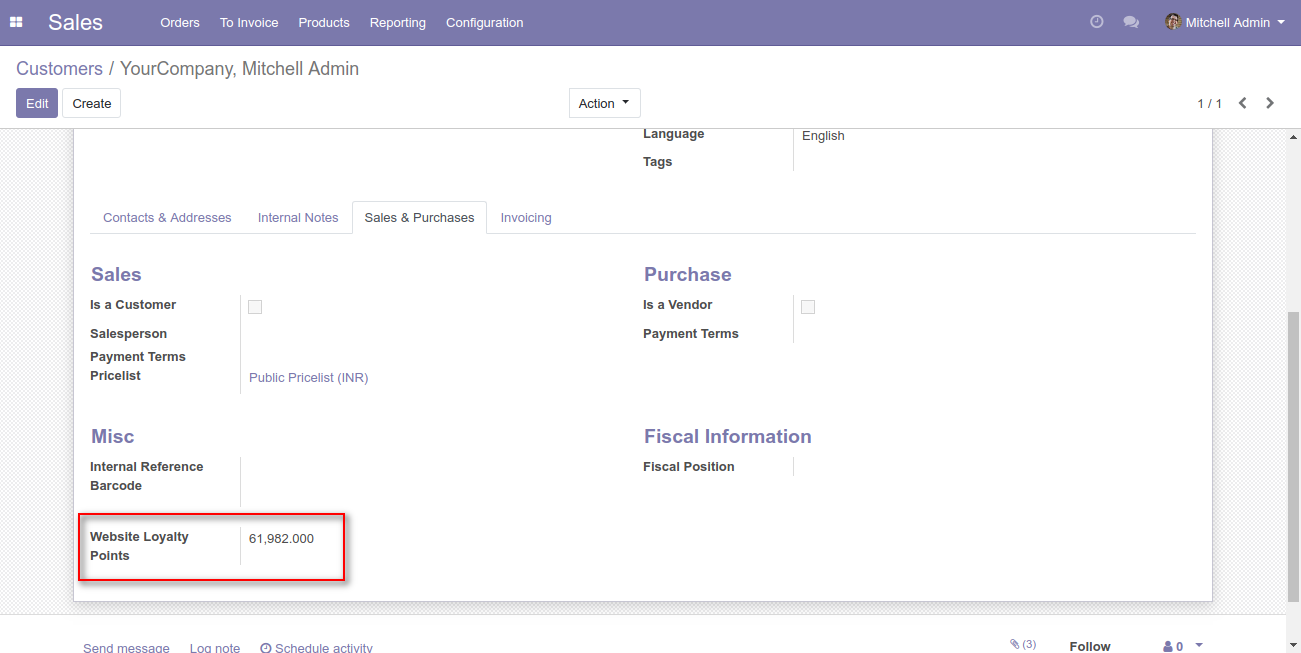
Information About Customer Loyalty Benefits.
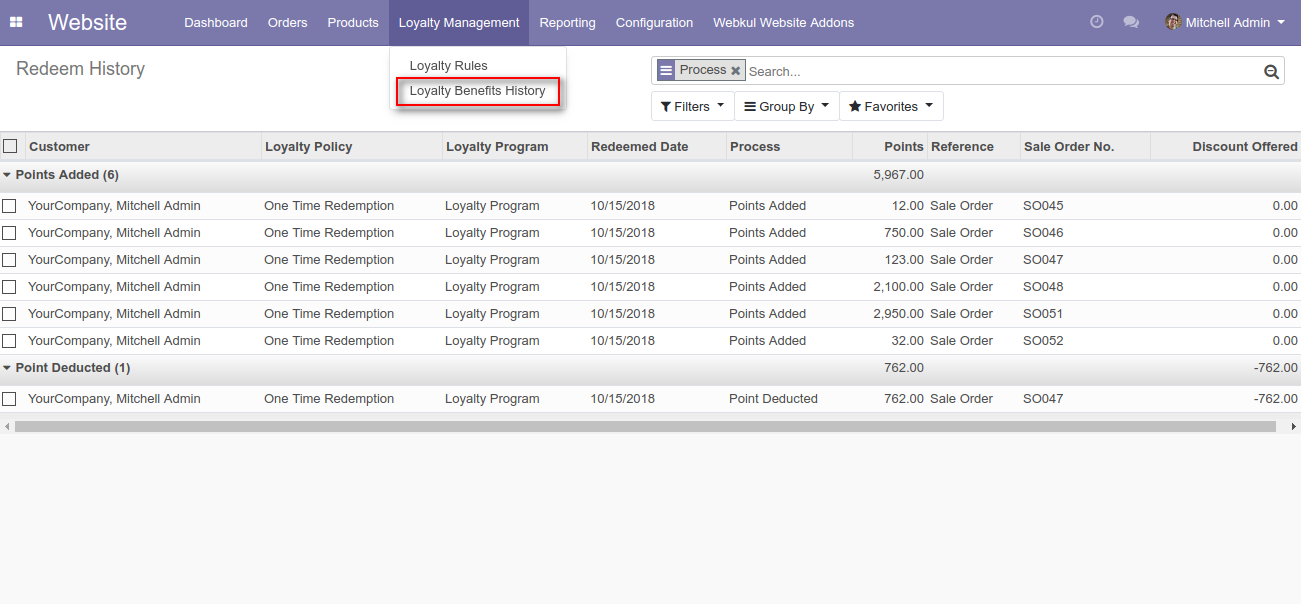
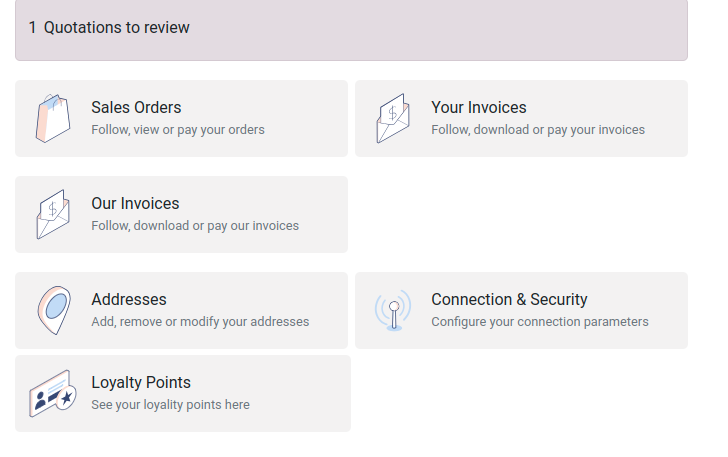
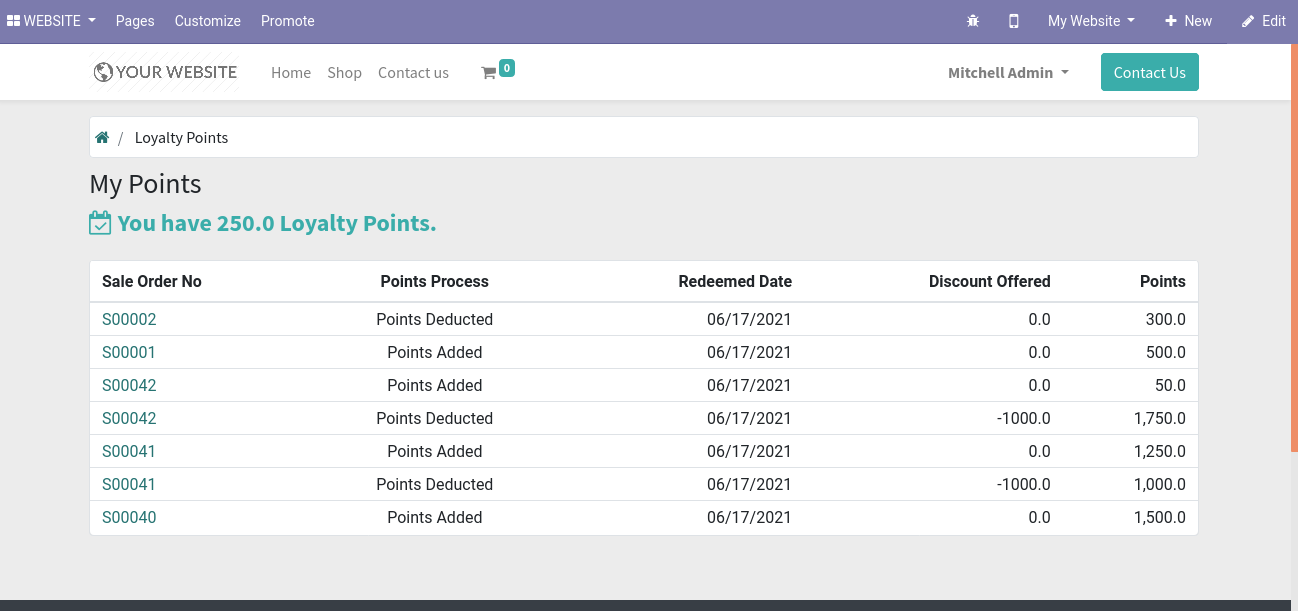
Help and Support
Get Immediate support for any of your query
You will get 90 days free support for any doubt, queries, and bug fixing (excluding data recovery) or any type of issue related to this module.

Write a mail to us:
[email protected]Any queries or want any extra features? Just drop a mail to our support.
Get in touch with our Expert:
https://webkul.uvdesk.com/en/customer/create-ticket/Have any technical queries, want extra features, or anything else? Our team is here to answer all your questions. Just Raise A Support Ticket.
This is an unofficial translation of the GNU Lesser General Public License into Vietnamese. It was not published by the Free Software Foundation,
and does not legally state the distribution terms for software that uses the GNU LGPL - only the original English text of the GNU LGPL does
that. However, we hope that this translation will help language speakers understand the GNU LGPL better.
GNU LESSER GENERAL PUBLIC LICENSE
Version 3, 29 June
2007
Copyright (C) 2007 Free Software Foundation, Inc. <https://fsf.org/>
Everyone is permitted to copy and distribute verbatim copies of this license document, but changing it is not allowed.
This version of the GNU Lesser General Public License incorporates the terms and conditions of version 3 of the GNU General Public License,
supplemented by the additional permissions listed below.
0. Additional Definitions.
As used herein,"this License" refers to version 3 of the GNU Lesser General Public License, and the "GNU GPL" refers to version 3 of
the GNU "General" Public License.
"The Library" refers to a covered work governed by this License, other than an Application or a Combined Work as defined below.
An "Application" is any work that makes use of an interface provided by the Library, but which is not otherwise based on the Library.
Defining a subclass of a class defined by the Library is deemed a mode of using an interface provided by the Library.
A "Combined Work" is a work produced by combining or linking an Application with the Library. The particular version of the Library
with which the Combined Work was made is also called the "Linked Version".
The "Minimal Corresponding Source" for a Combined Work means the Corresponding Source for the Combined Work, excluding any source code
for portions of the Combined Work that, considered in isolation, are based on the Application, and not on the Linked Version.
The "Corresponding Application Code" for a Combined Work means the object code and/or source code for the Application, including any data
and utility programs needed for reproducing the Combined Work from the Application, but excluding the System Libraries of the Combined Work.
1. Exception to Section 3 of the GNU GPL.
You may convey a covered work under sections 3 and 4 of this License without being bound by section 3 of the GNU GPL.
2. Conveying Modified Versions.
If you modify a copy of the Library, and, in your modifications, a facility refers to a function or data to be supplied by an Application that
uses the facility (other than as an argument passed when the facility is invoked), then you may convey a copy of the modified version:
a) under this License, provided that you make a good faith effort to ensure that, in the event an Application does not supply the function or data, the facility still
operates, and performs whatever part of its purpose remains meaningful, or
b) under the GNU GPL, with none of the additional permissions of this License applicable to that copy.
3. Object Code Incorporating Material from Library Header Files.
The object code form of an Application may incorporate material from a header file that is part of the Library. You may convey such
object code under terms of your choice, provided that, if the incorporated material is not limited to numerical parameters, data structure
layouts and accessors, or small macros, inline functions and templates (ten or fewer lines in length), you do both of the following:
a) Give prominent notice with each copy of the object code that the Library is used in it and that the Library and its use are covered by this License.
b) Accompany the object code with a copy of the GNU GPL and this license document.
4. Combined Works.
You may convey a Combined Work under terms of your choice that, taken together, effectively do not restrict modification of the portions of the
Library contained in the Combined Work and reverse engineering for debugging such modifications, if you also do each of the following:
a) Give prominent notice with each copy of the Combined Work that the Library is used in it and that the Library and its use are covered by this License.
b) Accompany the Combined Work with a copy of the GNU GPL and this license document.
c) For a Combined Work that displays copyright notices during execution, include the copyright notice for the Library among these notices,
as well as a reference directing the user to the copies of the GNU GPL and this license document.
d) Do one of the following:
0) Convey the Minimal Corresponding Source under the terms of this License, and the Corresponding Application Code in a form suitable for, and
under terms that permit, the user to recombine or relink the Application with a modified version of the Linked Version to produce a modified
Combined Work, in the manner specified by section 6 of the GNU GPL for conveying Corresponding Source.
1) Use a suitable shared library mechanism for linking with the Library. A suitable mechanism is one that (a) uses at run time a copy of the
Library already present on the user's computer system, and (b) will operate properly with a modified version of the Library
that is interface-compatible with the Linked Version.
e) Provide Installation Information, but only if you would otherwise be required to provide such information under section 6 of the
GNU GPL, and only to the extent that such information is necessary to install and execute a modified version of the Combined Work produced by
recombining or relinking the Application with a modified version of the Linked Version. (If you use option 4d0, the Installation Information
must accompany the Minimal Corresponding Source and Corresponding Application Code. If you use option 4d1, you must provide the Installation
Information in the manner specified by section 6 of the GNU GPL for conveying Corresponding Source.)
5. Combined Libraries.
You may place library facilities that are a work based on the Library side by side in a single library together with other library facilities that
are not Applications and are not covered by this License, and convey such a combined library under terms of your choice, if you do both of
the following:
a)Accompany the combined library with a copy of the same work based on the Library, uncombined with any other library facilities,
conveyed under the terms of this License.
b) Give prominent notice with the combined library that part of it is a work based on the Library, and explaining where to find the accompanying
uncombined form of the same work.
6. Revised Versions of the GNU Lesser General Public License.
The Free Software Foundation may publish revised and/or new versions of the GNU Lesser General Public License from time to time. Such new
versions will be similar in spirit to the present version, but may differ in detail to address new problems or concerns.
Each version is given a distinguishing version number. If the Library as you received it specifies that a certain numbered
version of the GNU Lesser General Public License "or any later version" applies to it, you have the option of following the terms and
conditions either of that published version or of any later version published by the Free Software Foundation. If the Library as you
received it does not specify a version number of the GNU Lesser General Public License, you may choose any version of the GNU Lesser
General Public License ever published by the Free Software Foundation.
If the Library as you received it specifies that a proxy can decide whether future versions of the GNU Lesser General Public License shall
apply, that proxy's public statement of acceptance of any version is permanent authorization for you to choose that version for the Library.